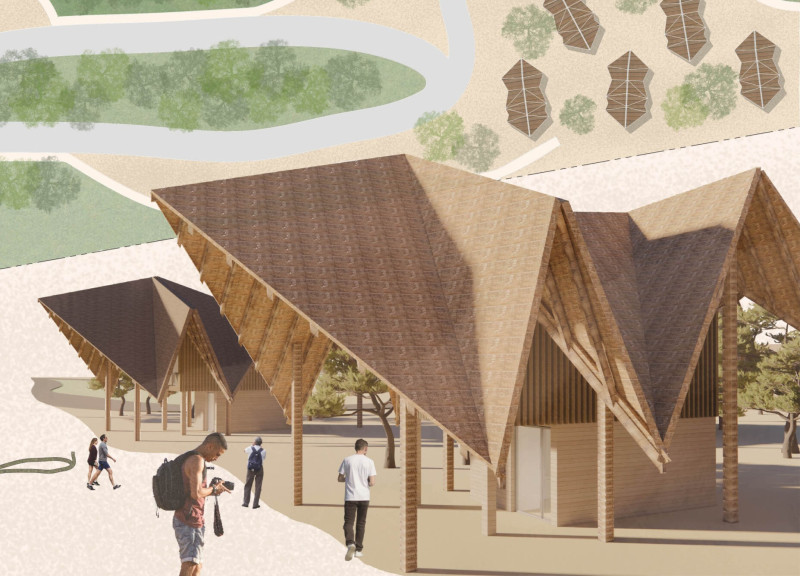5 key facts about this project
The Caramel Shores traveler’s room project is located in the Latvian village of Skrunda, which has a deep historical background as the secret city of the former Soviet Union. Designed as eco-friendly accommodation for tourists, the project aims to blend contemporary architecture with local traditions. The design concept focuses on creating connections between visitors and the surrounding landscape, prioritizing environmental aspects in its layout and overall vision.
Design Concept
The layout of the traveler rooms is inspired by the nearby Venta River. Pathways mimic the flow of the river, encouraging a feeling of harmony with the natural terrain. This design aids in enhancing the experience of exploring nature and appreciating the unique environment of Skrunda. The overall goal is to make visitors feel as though they are walking through a forest, engaging with both the architecture and the landscape.
Architectural Features
The project prominently features gabled roofs, which are characteristic of traditional Latvian architecture. These roofs provide a unified appearance for the structures while evoking the shapes of mountains in the background. The use of these traditional elements alongside modern designs results in a structure that respects the local heritage and meets contemporary needs.
Spatial Organization
Social interaction plays a key role in the project's design. Spaces such as the Entrance Square and Festival Stage are strategically placed to encourage guests to come together and engage with one another. The traveler rooms are designed with large windows that face south, allowing for ample natural light and providing views of the forest. This approach enhances the experience of being close to nature.
Environmental Considerations
Sustainability is a central focus throughout the design. Natural light and ventilation are integrated into the traveler rooms, promoting energy efficiency and comfort for the guests. Outdoor features, such as BBQ areas and pathways leading to amenities like a Traditional Sauna, invite visitors to connect with the local environment. These elements enhance the overall experience and encourage community interaction.
The careful layout and natural shape of the roofs, along with the thoughtful positioning of communal spaces, create a design that aligns well with its landscape, fostering an inviting atmosphere enjoyed by travelers seeking both comfort and a connection to nature.






















































